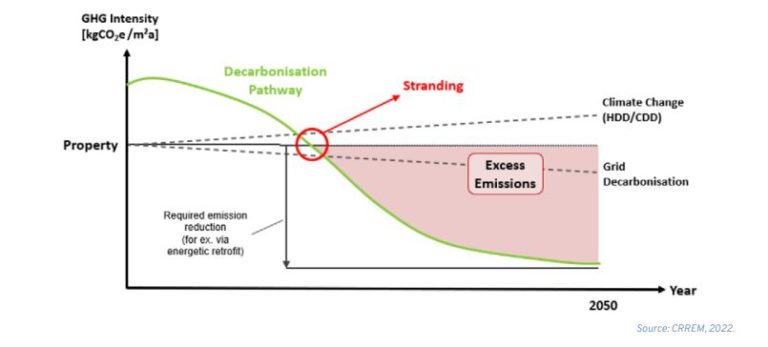Is our property, built even a few years ago, really up to date? What investments and measures will we have to take in the coming decades to ensure that our building meets the ever more stringent energy requirements and the expectations of tenants, investors and financiers?
Future proofing of buildings
The European Union aims to decarbonise the construction industry by 2050. One of the biggest challenges in reducing GHG emissions is the poor energy efficiency of existing buildings and the still too low renovation rates in all EU Member States. Reducing the EU’s carbon emissions will require a significant increase in the energy efficiency of existing buildings.
The EU-funded CRREM (Carbon Risk Real Estate Monitor) research project has the following key objectives: reducing the carbon risk associated with premature obsolescence and potential depreciation due to changing market expectations and legislation.
The purpose of the CRREM study
The primary objective is to support industry to overcome these risks and to promote energy efficiency investments, as many assets become stranded properties that do not meet future energy efficiency standards and whose energy upgrades may not be financially recoverable. Climate change could put property companies’ business at risk if they do not take action to transform the real estate portfolio they manage. Increased attention to climate change risk management is therefore essential. Corporate strategy and risk management must ensure that individual efforts to mitigate CO2 within their portfolio are sufficient to meet EU targets – otherwise the operator may find itself in a situation where the property does not meet future market expectations and therefore loses value.
CRREM aims to develop a tool that allows investors and property owners to assess the exposure of their assets to migration risks – based on an analysis of energy and emissions data and regulatory requirements . The CRREM initiative will set out decarbonisation pathways that will translate the ambition of the Paris Agreement (limiting global warming to 1.5°C) into action by the end of the century. The non-profit initiative is supported by the EU Commission, the Laudes Foundation, APG, PGGM and Norges Bank Investment Management. The excel-based model was last updated in March 2024.
The CRREM analysis consists of the following steps

